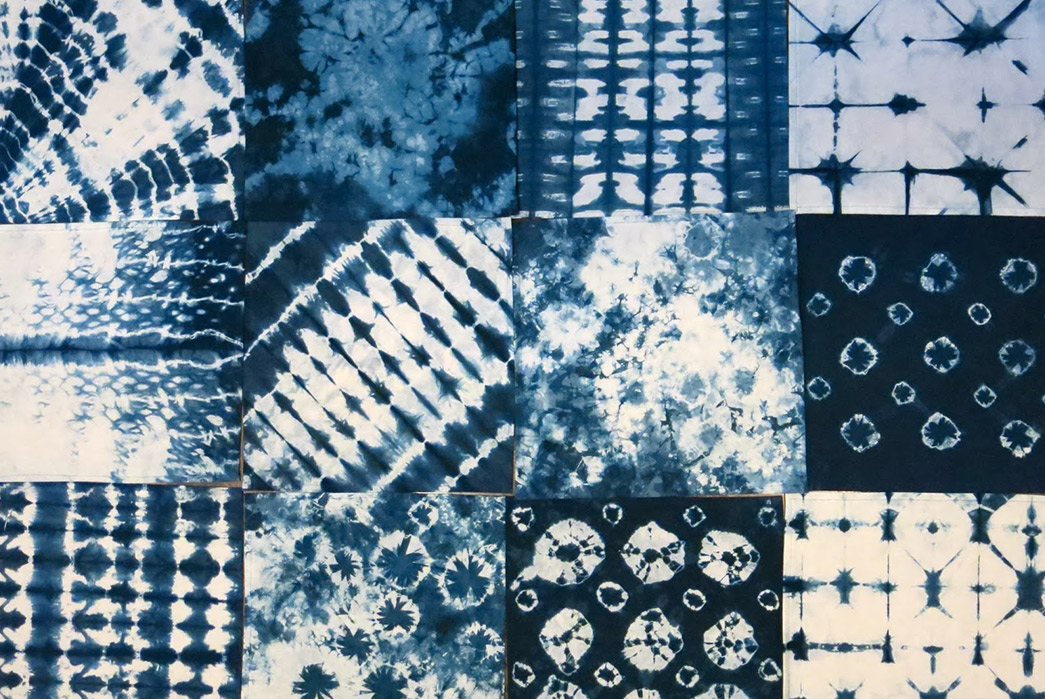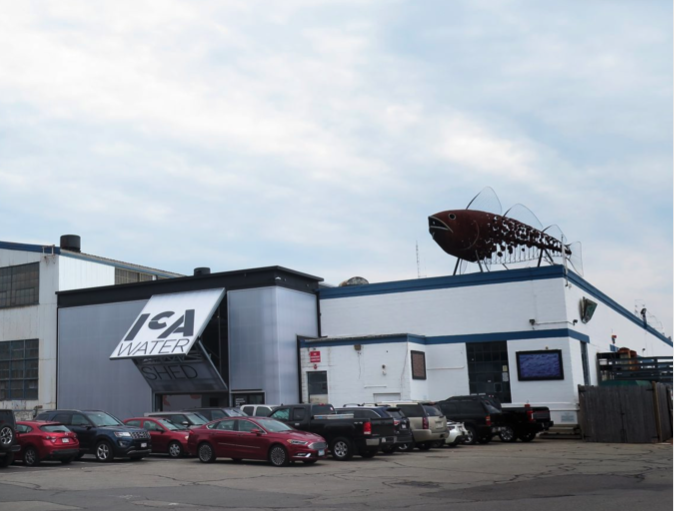The sunken walls of Firelei Báez's vision of Sans-Souci Palace are decorated in blue to recall the indigo dye used in West Africa, and at the end of the installation, in a separate space, is a giant painting by Stephen Hamilton, celebrating the use of indigo in textiles:

There are also samples of indigo-dyed fabrics created by Agnes Umeche, based on traditional designs.

And this informational plaque tells you a little more about Agnes Umeche and her work. (To read the text you'll have to click through and embiggen.)

Interestingly the indigo used in West Africa (Lonchocarpus cyanescens ) is different from the indigo used in Japan (Persicaria tinctoria), and both of those are different from woad (Isatis tinctoria) which also produces a blue dye. (Thanks goes out to the ninja girl for conveying that fact to me--I wouldn't have known!)
Here's some Japanese tie-dyeing--interesting to see the similarities with the West African tie-dyeing.

... and I happened to be using my copy of Lloyd Alexander's The Fortune Tellers as a hard surface on which to write a letter the other day, and I noticed that Trina Schart Hyman had made indigo borders around the edge of the cover design. NICE.


There are also samples of indigo-dyed fabrics created by Agnes Umeche, based on traditional designs.

And this informational plaque tells you a little more about Agnes Umeche and her work. (To read the text you'll have to click through and embiggen.)

Interestingly the indigo used in West Africa (Lonchocarpus cyanescens ) is different from the indigo used in Japan (Persicaria tinctoria), and both of those are different from woad (Isatis tinctoria) which also produces a blue dye. (Thanks goes out to the ninja girl for conveying that fact to me--I wouldn't have known!)
Here's some Japanese tie-dyeing--interesting to see the similarities with the West African tie-dyeing.

... and I happened to be using my copy of Lloyd Alexander's The Fortune Tellers as a hard surface on which to write a letter the other day, and I noticed that Trina Schart Hyman had made indigo borders around the edge of the cover design. NICE.







